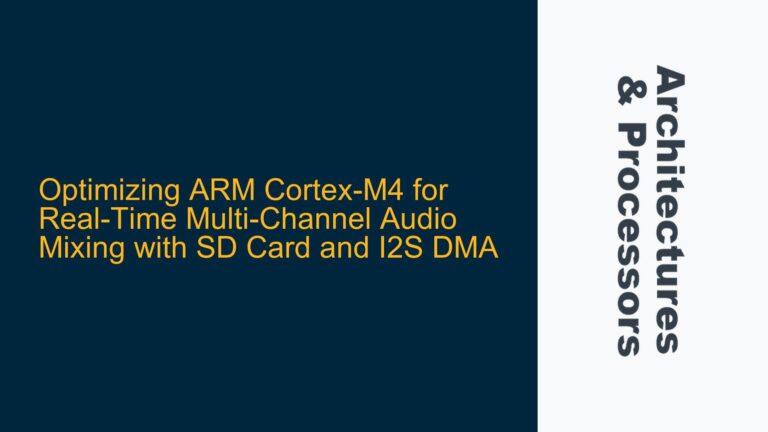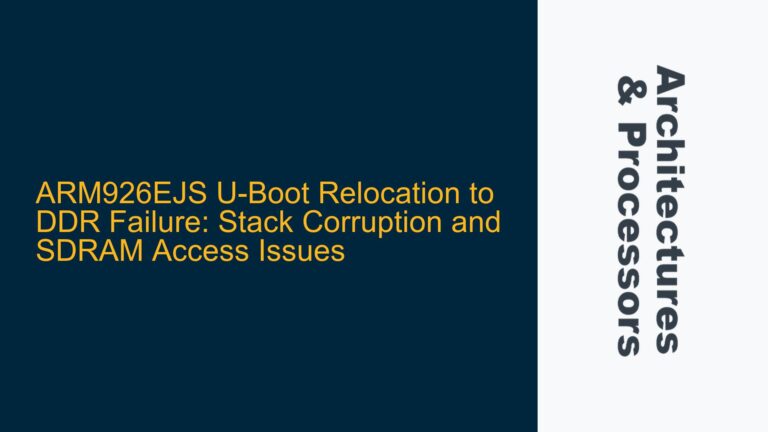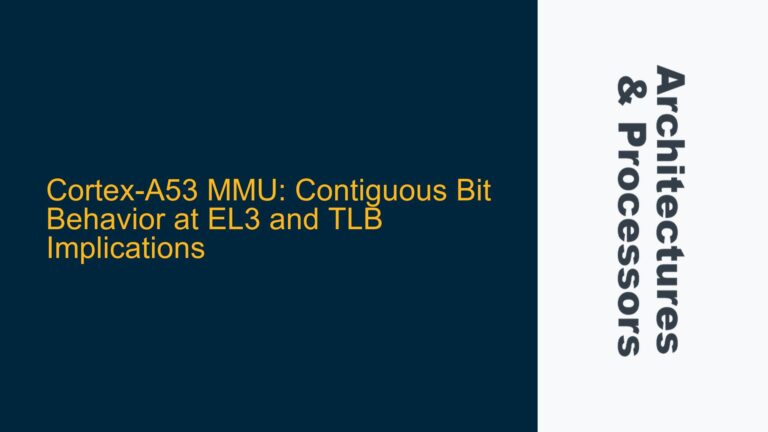ARM Cortex-M MPU Fault Recovery Mechanism and Illegal Execution Fault
The core issue revolves around implementing fault recovery in a Cortex-M-based system using the Memory Protection Unit (MPU) for thread isolation. The goal is to allow tasks to handle system faults gracefully, recover, or clean up resources before suspending or deleting themselves. The mechanism involves modifying the program counter (PC) within the MemManage_Handler to redirect execution to a recovery function (vServiceThrowException). However, after the recovery function executes and attempts to resume normal task execution, an illegal execution fault occurs, leading to a second invocation of MemManage_Handler and eventually a hard fault.
The fault recovery mechanism relies on manipulating the stack frame and program counter during the fault handler to redirect execution. While the initial redirection to vServiceThrowException succeeds, the subsequent return to normal task execution fails, indicating a misalignment in the processor state or memory access permissions. This issue is particularly critical in systems using the MPU for thread isolation, as improper handling of privilege levels or memory access can lead to cascading faults.
Stack Frame Corruption and Privilege Level Mismanagement
The primary cause of the illegal execution fault lies in the interaction between the fault handler, the recovery function, and the task’s execution context. When the MemManage_Handler modifies the program counter to redirect execution to vServiceThrowException, it also raises the privilege level by clearing the unprivileged bit in the CONTROL register. This ensures that vServiceThrowException executes in privileged mode, which is necessary for certain operations like longjmp.
However, the transition back to the task’s normal execution context introduces several potential issues. First, the stack frame may be corrupted or misaligned during the fault handling and recovery process. The longjmp function restores the task’s context from a jmp_buf structure, but this restoration may not account for changes made by the fault handler, such as the modified program counter or privilege level. If the stack frame is not properly restored, the processor may attempt to execute from an invalid address, triggering an illegal execution fault.
Second, the privilege level transition may not be handled correctly when returning to the task. The portSWITCH_TO_USER_MODE macro is used to switch back to unprivileged mode, but this transition must be carefully coordinated with the stack frame restoration. If the privilege level is not properly synchronized with the task’s execution context, the processor may attempt to execute privileged instructions in unprivileged mode, leading to a fault.
Third, the MPU configuration may not be correctly restored after the fault recovery. The MPU settings are critical for enforcing memory access restrictions and ensuring thread isolation. If the MPU regions are not reconfigured correctly after the fault handler exits, the task may encounter memory access violations, leading to additional faults.
Implementing Robust Fault Recovery with MPU and Privilege Synchronization
To address the illegal execution fault and ensure reliable fault recovery, the following steps and solutions should be implemented:
1. Validate and Restore the Stack Frame
Ensure that the stack frame is correctly restored during the fault recovery process. The longjmp function should be used in conjunction with a carefully constructed jmp_buf that includes all necessary processor state information, including the program counter, stack pointer, and general-purpose registers. Additionally, the fault handler should verify that the stack frame is not corrupted before modifying the program counter.
void vServiceThrowException(BaseType_t xException) {
Service_t *pxService = pvCapsuleGetCurrentServiceID();
pxService->xLastException = xException;
if (capconfigEXCEPTION_SELF_HANDLING == 1) {
longjmp(pxService->xJumpBuffer, xException);
} else {
vTaskSuspend(NULL);
}
}
2. Synchronize Privilege Level Transitions
Ensure that privilege level transitions are properly synchronized with the task’s execution context. The portSWITCH_TO_USER_MODE macro should be invoked only after the stack frame has been fully restored and the task is ready to resume execution in unprivileged mode. Additionally, the fault handler should explicitly set the privilege level before exiting to ensure that the processor is in the correct mode.
__asm volatile (
"mrs r1, control \n" // Obtain current control value.
"bic r1, #1 \n" // Clear unprivileged bit.
"msr control, r1 \n" // Write back new control value.
::: "r1", "memory"
);
3. Reconfigure MPU Settings
Ensure that the MPU settings are correctly reconfigured after the fault handler exits. The fault handler should save the current MPU configuration before modifying it and restore the original settings before returning to the task. This ensures that the task’s memory access permissions are preserved and that thread isolation is maintained.
void MemManage_Handler(void) {
// Save current MPU configuration.
uint32_t mpuSettings[MPU_REGION_COUNT];
for (int i = 0; i < MPU_REGION_COUNT; i++) {
mpuSettings[i] = MPU->RNR = i;
mpuSettings[i] = MPU->RBAR & MPU->RASR;
}
// Perform fault handling and recovery.
// Restore MPU configuration.
for (int i = 0; i < MPU_REGION_COUNT; i++) {
MPU->RNR = i;
MPU->RBAR = mpuSettings[i] & 0xFFFFFFE0;
MPU->RASR = mpuSettings[i] & 0x0000001F;
}
}
4. Debug and Verify Fault Recovery
Use debugging tools to verify that the fault recovery mechanism works as intended. Set breakpoints at key locations in the fault handler, recovery function, and task entry point to monitor the processor state and ensure that the stack frame, privilege level, and MPU settings are correctly managed. Additionally, use the processor’s fault status registers to diagnose the cause of any faults that occur during recovery.
void HardFault_Handler(void) {
uint32_t *pStackFrame;
__asm volatile (
"tst lr, #4 \n"
"ite eq \n"
"mrseq %0, msp \n"
"mrsne %0, psp \n"
: "=r"(pStackFrame)
);
uint32_t faultStatus = SCB->CFSR;
uint32_t memManageFault = faultStatus & 0xFF;
uint32_t busFault = (faultStatus >> 8) & 0xFF;
uint32_t usageFault = (faultStatus >> 16) & 0xFFFF;
// Log or handle fault information.
}
By carefully validating the stack frame, synchronizing privilege level transitions, reconfiguring MPU settings, and debugging the fault recovery process, the illegal execution fault can be resolved, and reliable fault recovery can be achieved in an ARM Cortex-M system using the MPU for thread isolation.






